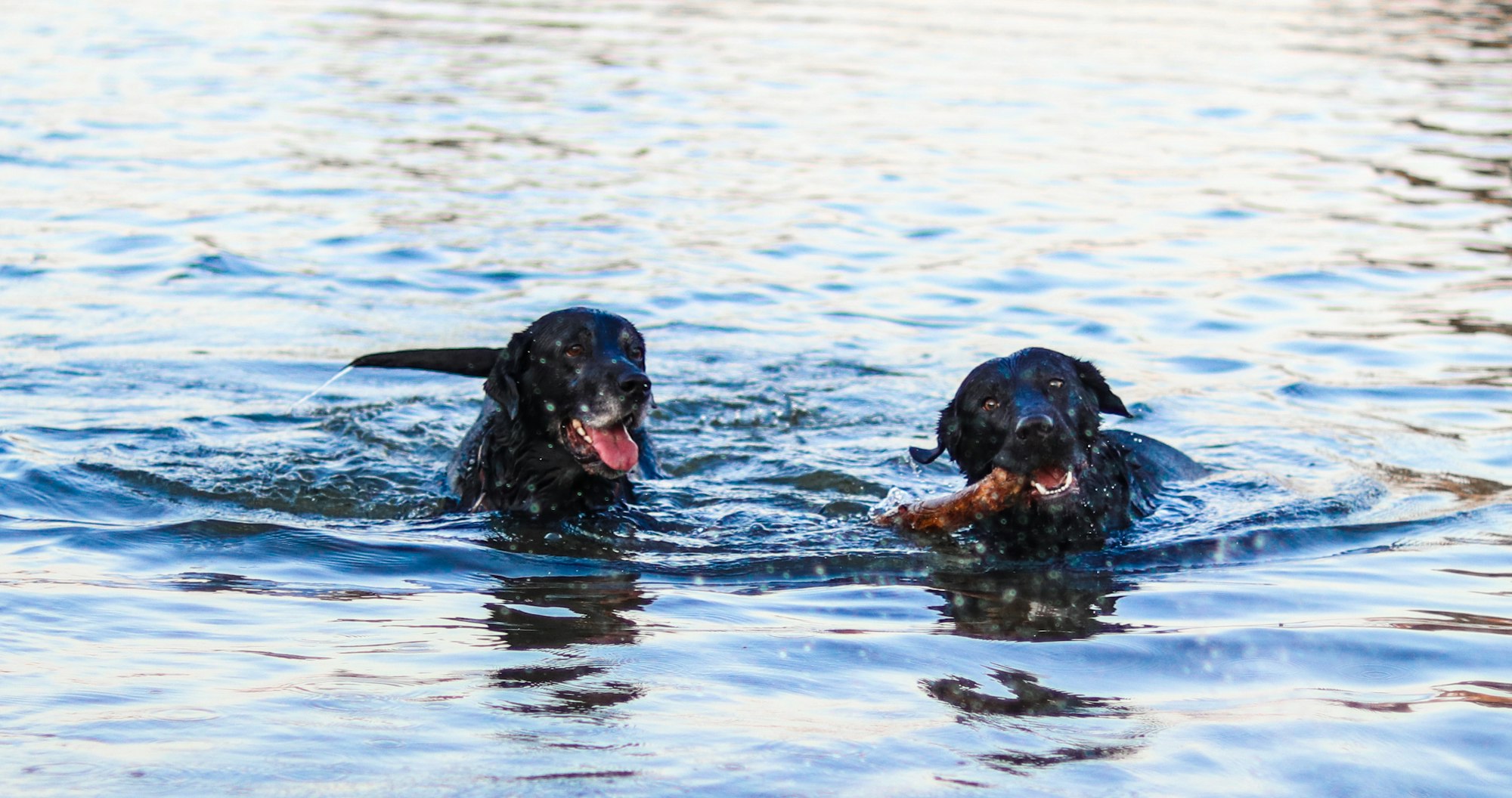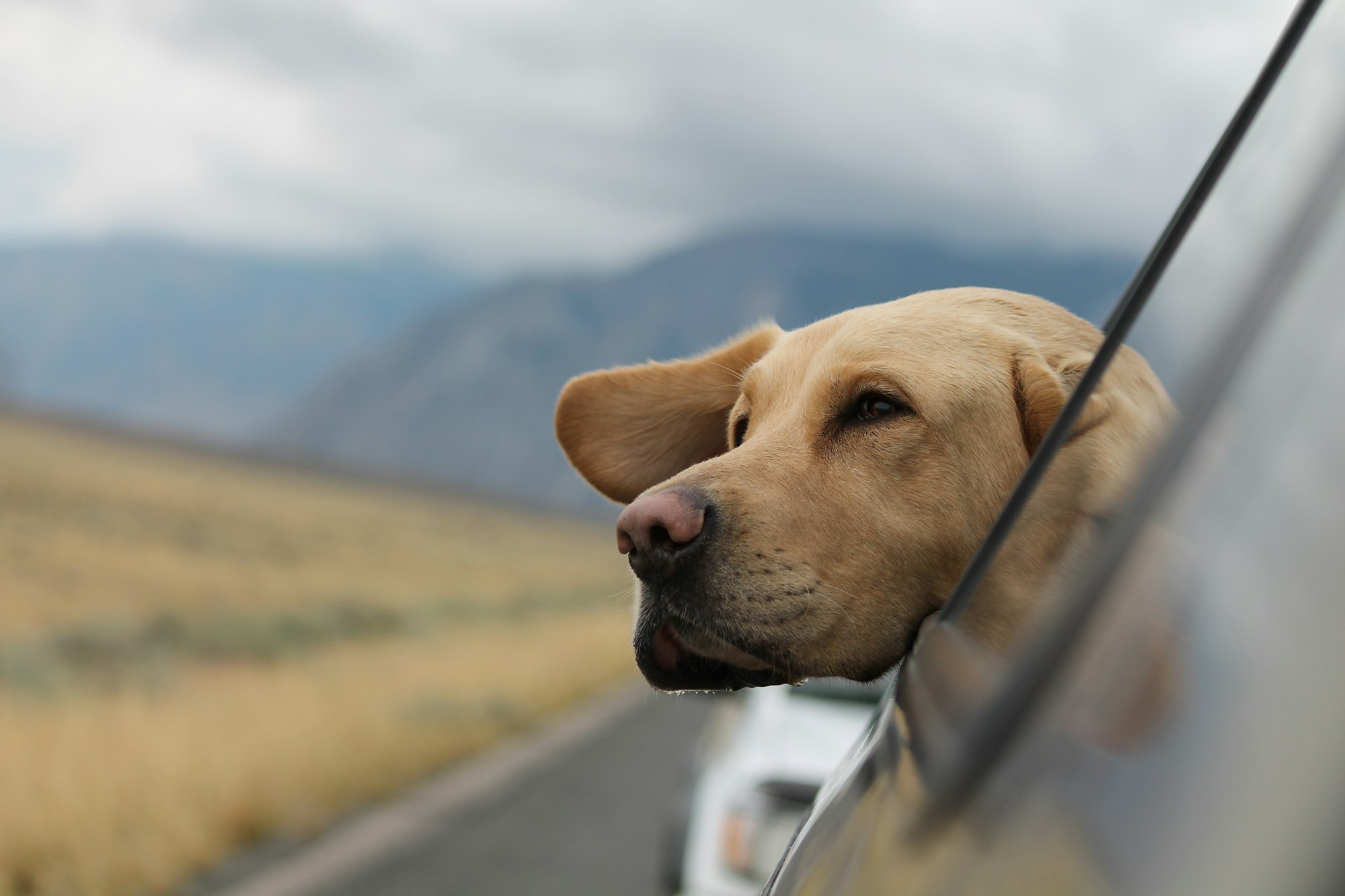When it comes to understanding our canine companions, nothing quite sparks curiosity and intrigue like the phenomenon of prey drive in dogs. Picture this: you're enjoying a peaceful walk in the park with your beloved furry friend.
Suddenly, a squirrel darts out from a bush, and your calm, composed dog transforms into a focused, driven creature, determined to chase the fleeting critter. This transformation is largely fueled by your dog's prey drive.
A Deep Dive into the Dog's Prey Drive
Prey drive isn't aggression or a sign of a problematic dog; it's an instinctive behavior ingrained into their DNA. Back in the day, dogs weren't domesticated creatures cuddling on our couches. They were wild animals hunting for their food. Today, even the most domesticated dogs still carry these primal instincts, known as prey drive.

The Science of Prey Drive
But what exactly triggers this canine prey drive? It all comes down to their sensory cues. Dogs are incredibly sensory creatures. Movement, especially erratic and quick movement, triggers their hunting instincts, stirring the prey drive within them. Even the smallest rustle in a bush or a quick darting motion can catch their attention and provoke the chase.
Dog Breeds and Prey Drive
It's crucial to remember that all dogs are individuals. Just like humans, they can vary dramatically in their behaviors and traits. However, certain dog breeds are known to have a higher prey drive due to their historical roles. For instance, terriers were bred for hunting vermin, so they often have a strong prey drive.
Managing High Prey Drive: The Role of Exercise and Training
There's no 'cure' for a high prey drive; it's part of your dog's natural instincts. However, there are ways to manage it. One key component is exercise. Regular exercise can help reduce a dog's energy levels, making them less likely to give in to their prey drive impulses.
Another effective method is dog training. Training techniques focused on impulse control can be incredibly beneficial. Teach your dog commands like "leave it" or "stay" and reward them when they obey, even in the face of temptation.
Consider using a toy for teething puppies during training. The toy will not only keep your dog occupied but also help manage their prey drive. Toys that move unpredictably can simulate prey, providing a safe and controlled outlet for your dog's instinctual behavior.
Dog's Prey Drive and Safety
Dogs with a high prey drive can pose certain challenges, especially in environments with small animals or children. Therefore, understanding how to control your dog's prey drive is not just about preventing a squirrel chase. It's also about safety.
It's important to never leave a high prey drive dog unsupervised with small animals or babies. Their movements can trigger the dog's prey instincts, and even if they mean no harm, it's better to be safe than sorry.
Socializing High Prey Drive Dogs: A Blend of Therapy and Patience
Socializing high prey drive dogs is another vital aspect of managing this instinctual behavior. It's a form of therapy for your dog, teaching them how to behave around other animals and humans. It should start when they're puppies, but it's never too late to socialize an adult dog.
Socialization helps your dog understand what's expected of them in different situations. It aids them in distinguishing between what's a playmate, what's part of their pack, and what's potential prey.
Prey Drive Triggers: Water, Allergies, and More
Strange as it may sound, even certain non-living things can trigger a dog's prey drive. Water, for example, due to its motion, can excite some dogs. It's not uncommon to see dogs chasing sprinklers or biting at water streams.
Sometimes, what seems like an elevated prey drive might actually be a reaction to discomfort caused by other issues like allergies. Dogs with skin allergies might scratch, bite, or chase their tails, mimicking prey drive behaviors. So, if your dog's prey drive behavior seems out of character or unusually high, it might be worth consulting with a vet.

The End of the Chase
As we've discovered, the mystery of prey drive in dogs is not so mysterious after all. It's a natural part of their behavior, tied to their history and survival. Understanding and managing it is an essential part of responsible dog ownership, leading to happier, safer lives for our furry friends and us.
And, should you ever find yourself with your leash in hand, watching as your dog excitedly chases a leaf blown by the wind, remember that they're not just being silly. They're tapping into an instinct that's as old as their species, a part of them that makes them the dogs we know and love.
Remember, every chase of a squirrel, every leap for a frisbee, every pounce on a toy is an echo of their wild ancestors. And isn't that part of the joy of dogs - their exuberant zest for life, their instincts, their very 'dog-ness'? In unraveling the mystery of prey drive in dogs, we come closer to understanding and appreciating these creatures that share our homes and our lives.
When it comes to understanding our canine companions, nothing quite sparks curiosity and intrigue like the phenomenon of prey drive in dogs. Picture this: you're enjoying a peaceful walk in the park with your beloved furry friend. Suddenly, a squirrel darts out from a bush, and your calm, composed dog transforms into a focused, driven creature, determined to chase the fleeting critter. This transformation is largely fueled by your dog's prey drive.
A Deep Dive into the Dog's Prey Drive
Prey drive isn't aggression or a sign of a problematic dog; it's an instinctive behavior ingrained into their DNA. Back in the day, dogs weren't domesticated creatures cuddling on our couches. They were wild animals hunting for their food. Today, even the most domesticated dogs still carry these primal instincts, known as prey drive.

The Science of Prey Drive
But what exactly triggers this canine prey drive? It all comes down to their sensory cues. Dogs are incredibly sensory creatures. Movement, especially erratic and quick movement, triggers their hunting instincts, stirring the prey drive within them. Even the smallest rustle in a bush or a quick darting motion can catch their attention and provoke the chase.
Dog Breeds and Prey Drive
It's crucial to remember that all dogs are individuals. Just like humans, they can vary dramatically in their behaviors and traits. However, certain dog breeds are known to have a higher prey drive due to their historical roles. For instance, terriers were bred for hunting vermin, so they often have a strong prey drive.
Managing High Prey Drive: The Role of Exercise and Training
There's no 'cure' for a high prey drive; it's part of your dog's natural instincts. However, there are ways to manage it. One key component is exercise. Regular exercise can help reduce a dog's energy levels, making them less likely to give in to their prey drive impulses.
Another effective method is dog training. Training techniques focused on impulse control can be incredibly beneficial. Teach your dog commands like "leave it" or "stay" and reward them when they obey, even in the face of temptation.
Consider using a toy for teething puppies during training. The toy will not only keep your dog occupied but also help manage their prey drive. Toys that move unpredictably can simulate prey, providing a safe and controlled outlet for your dog's instinctual behavior.

Dog's Prey Drive and Safety
Dogs with a high prey drive can pose certain challenges, especially in environments with small animals or children. Therefore, understanding how to control your dog's prey drive is not just about preventing a squirrel chase. It's also about safety.
It's important to never leave a high prey drive dog unsupervised with small animals or babies. Their movements can trigger the dog's prey instincts, and even if they mean no harm, it's better to be safe than sorry.
Socializing High Prey Drive Dogs: A Blend of Therapy and Patience
Socializing high prey drive dogs is another vital aspect of managing this instinctual behavior. It's a form of therapy for your dog, teaching them how to behave around other animals and humans. It should start when they're puppies, but it's never too late to socialize an adult dog.
Socialization helps your dog understand what's expected of them in different situations. It aids them in distinguishing between what's a playmate, what's part of their pack, and what's potential prey.
Prey Drive Triggers: Water, Allergies, and More
Strange as it may sound, even certain non-living things can trigger a dog's prey drive. Water, for example, due to its motion, can excite some dogs. It's not uncommon to see dogs chasing sprinklers or biting at water streams.
Sometimes, what seems like an elevated prey drive might actually be a reaction to discomfort caused by other issues like allergies. Dogs with skin allergies might scratch, bite, or chase their tails, mimicking prey drive behaviors. So, if your dog's prey drive behavior seems out of character or unusually high, it might be worth consulting with a vet.
The End of the Chase
As we've discovered, the mystery of prey drive in dogs is not so mysterious after all. It's a natural part of their behavior, tied to their history and survival. Understanding and managing it is an essential part of responsible dog ownership, leading to happier, safer lives for our furry friends and us.
And, should you ever find yourself with your leash in hand, watching as your dog excitedly chases a leaf blown by the wind, remember that they're not just being silly. They're tapping into an instinct that's as old as their species, a part of them that makes them the dogs we know and love.
Remember, every chase of a squirrel, every leap for a frisbee, every pounce on a toy is an echo of their wild ancestors. And isn't that part of the joy of dogs - their exuberant zest for life, their instincts, their very 'dog-ness'? In unraveling the mystery of prey drive in dogs, we come closer to understanding and appreciating these creatures that share our homes and our lives.
Harnessing Technology to Manage Prey Drive: Fi Dog Collars
In our quest to manage the prey drive in dogs, technology has emerged as a reliable ally. Innovative products like Fi dog collars have taken the pet world by storm, providing dog owners with new ways to ensure the safety and well-being of their pets.
Fi dog collars are a breakthrough in pet tech, designed to help dog owners monitor their pet's activity levels and location in real-time. So, how does this relate to managing your dog's prey drive?
Fi Collars: Keeping High Prey Drive Dogs Safe
One of the most significant concerns with high prey drive dogs is their tendency to chase after animals, potentially leading them far away from home or into dangerous situations. This is where Fi dog collars come into play.
Fi collars come equipped with GPS tracking, allowing you to keep tabs on your pet at all times. If your dog decides to give chase to a squirrel and ends up far from home, you can quickly locate them using the Fi app. It adds a layer of safety and reassurance, helping to prevent lost dog scenarios.
Using Fi Collars for Exercise Tracking
We've discussed the importance of exercise in managing your dog's prey drive. Regular exercise can help expend their energy, reducing the likelihood of them acting on their prey drive impulses. But how do you measure if your dog is getting enough exercise?
This is another area where Fi dog collars shine. They act as a fitness tracker for your dog, monitoring their activity levels throughout the day. This data can help you ensure that your high prey drive dog is getting the physical activity they need to keep their impulses in check.
Training and Fi Dog Collars: A Dynamic Duo
Training is a vital tool in managing a dog's prey drive. Fi dog collars can aid your training efforts in unexpected ways. By monitoring your dog's reactions to certain stimuli and tracking their activity during training sessions, you can glean insights into what triggers their prey drive and how effective your training techniques are.
The use of tech like Fi dog collars represents the future of responsible pet ownership. By harnessing the power of such innovations, we can better understand our pets, keep them safe, and effectively manage complex behaviors like prey drive. It's yet another tool in our kit as we continue unraveling the mystery of our canine companions.
Conclusion:
To conclude, understanding and managing the prey drive in dogs is a multifaceted task, driven by awareness of their natural instincts, breed-specific behaviors, and individual personalities. From early socialization and exercise to impulse control training and technological assistance like Fi dog collars, various strategies can help.
We must remember, our goal isn't to 'cure' this instinct but to manage it safely and responsibly. The critical elements in this journey are patience, love, and understanding, along with a commitment to providing an environment that respects their instinctual needs while ensuring their safety and the safety of others.
In doing so, we not only unravel the mystery of prey drive but also strengthen our bond with our canine companions, enabling them to lead balanced, happy lives as integral parts of our homes and our lives.